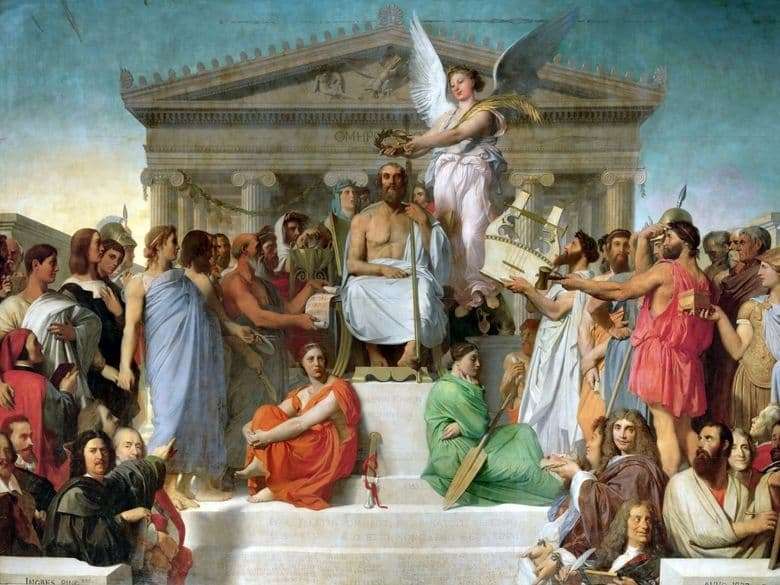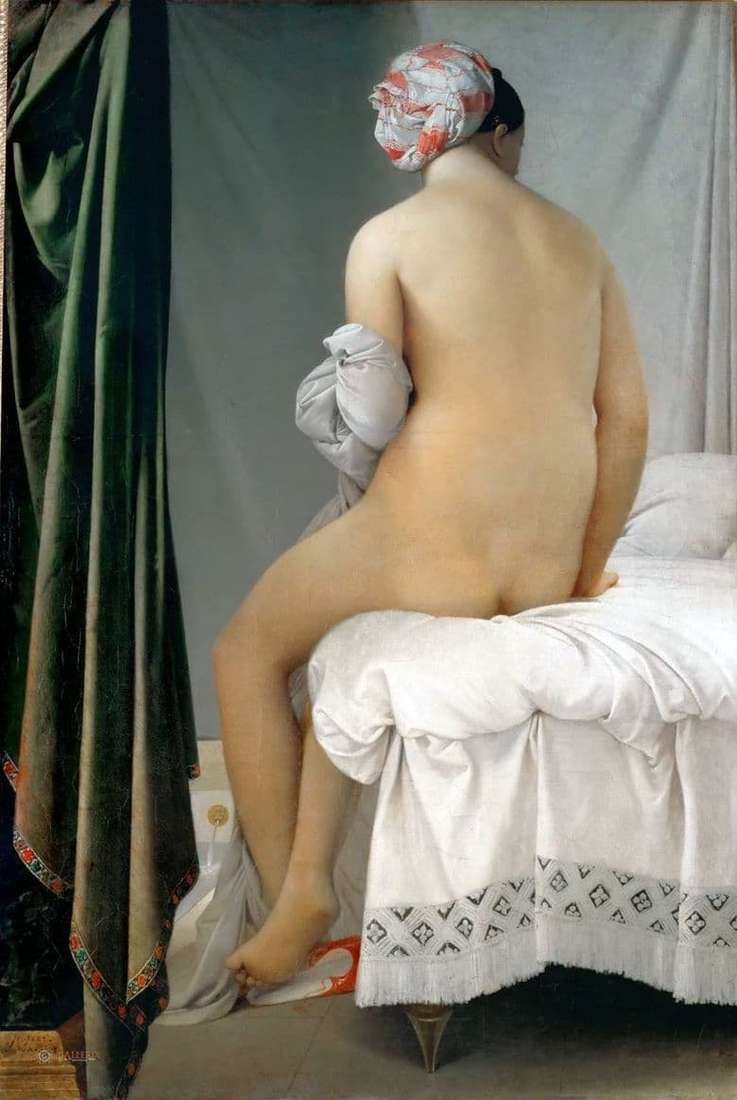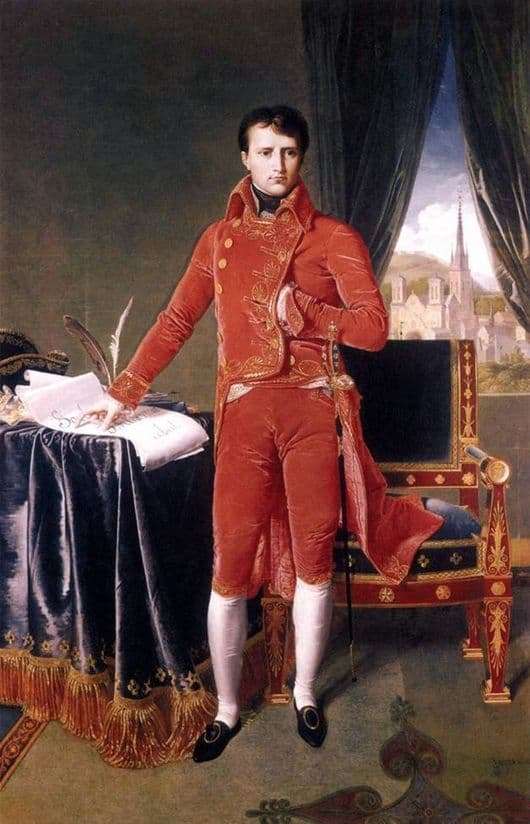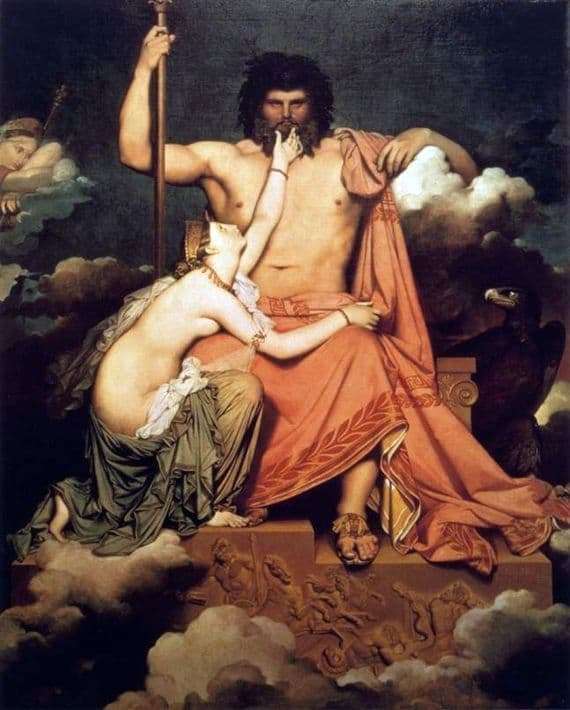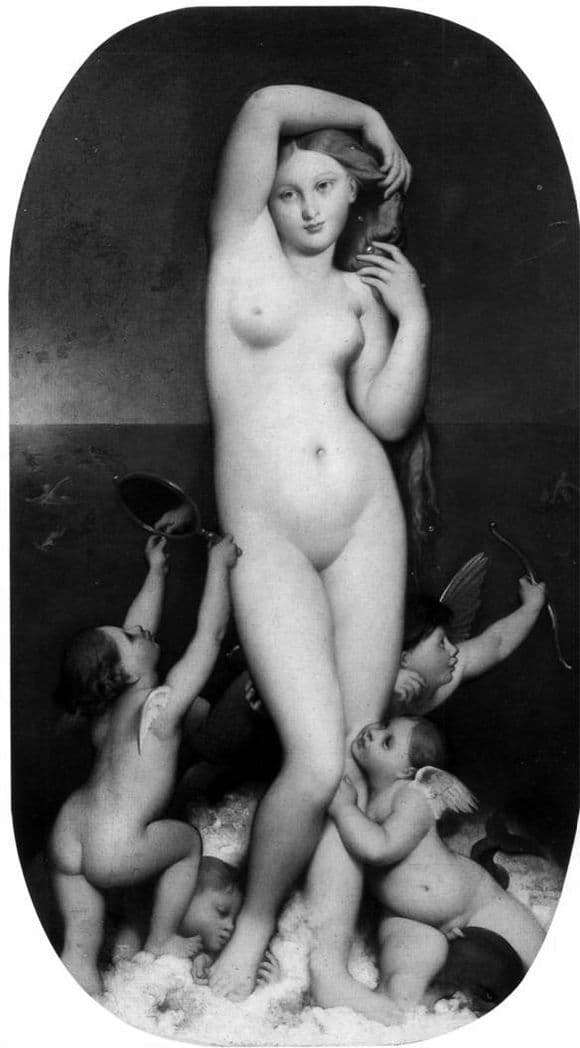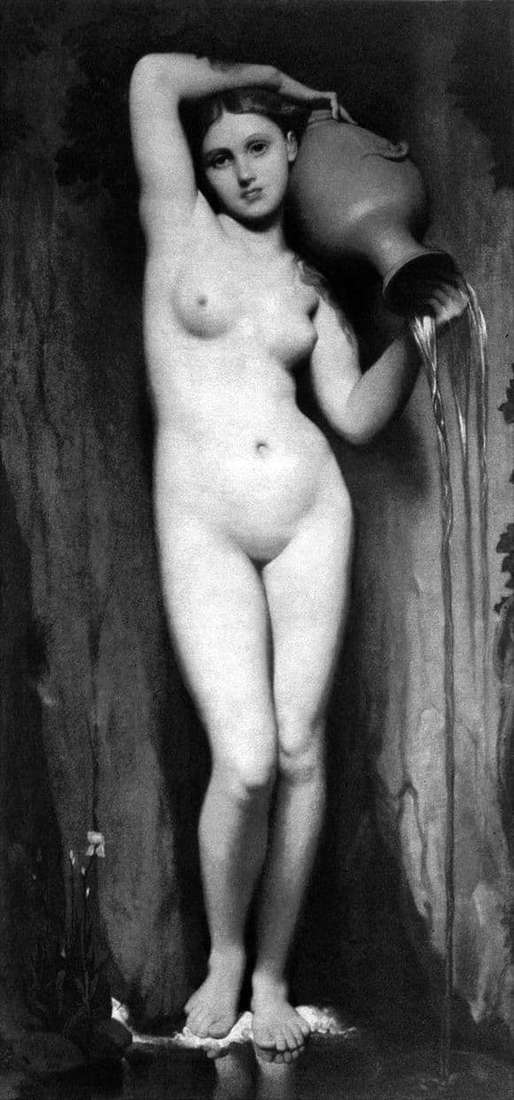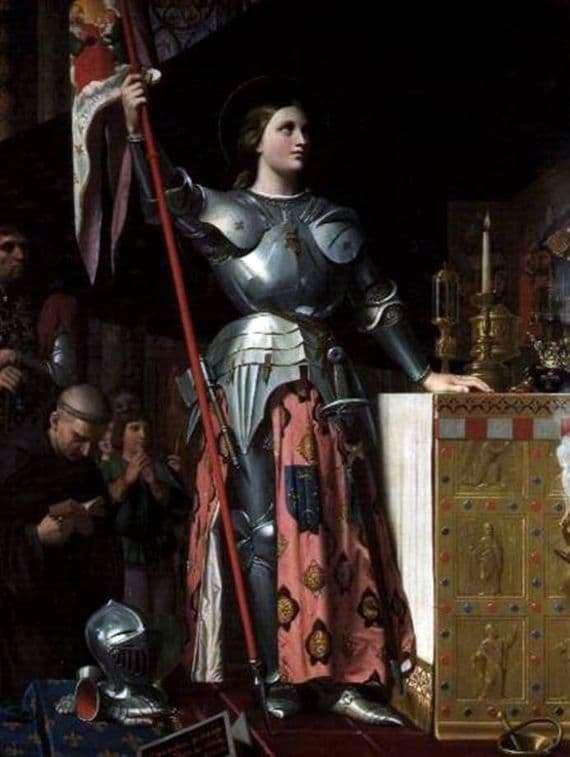
The basis of his famous work Ingre laid the ancient Greek legend of the Sphinx. Sphinx – a terrible monster with a female head and charms, but he has a lion body, a rattlesnake tail and huge white wings.
For each traveler who wants to get into Thebes, this monster would make a well-known riddle about an animal that can walk on two, three or four legs. Travelers who can not guess the truth, the monster Sphinx always devoured.
The ancient Greek hero Oedipus managed to give the correct answer, to the riddle of the Sphinx and in response the monster jumped from the top of the mountain and crashed against the rocks.
The tragic and sad story about the life of Oedipus, which tells about his arrival in Thebes, the killing of his own father through the ignorance of their loved ones, as well as the hasty marriage of his own mother and the birth of four children in incest, quite often forced artists to write about this picture. Later, Oedipus was expelled by his own children from Thebes.
Working on the composition of his famous painting, Ingres decides to depict the moment of the mental duel of Oedipus with the monster, at the cost of which Oedipus’s life and freedom of the city were. The monster raided Thebes, but no one was able to defeat him in a mental battle.
In the right corner of his composition, the artist stirs an amazing woman with a lion body – the Sphinx, symbolizing her dark monstrous side opposite to good and light. The main character Oedipus, on the contrary, is lit by sunshine.
All the features of his face and body demonstrate concentration, not wanting to retreat in front of the imperturbable Sphinx. He defeats him in a hay duel. Such a lively and bright face of the hero enters into a contrasting struggle with the glass impenetrable appearance of the Sphinx, similar to an ancient statue.
Description of the painting by Jean-Auguste Ingres “Oedipus and the Sphinx”
